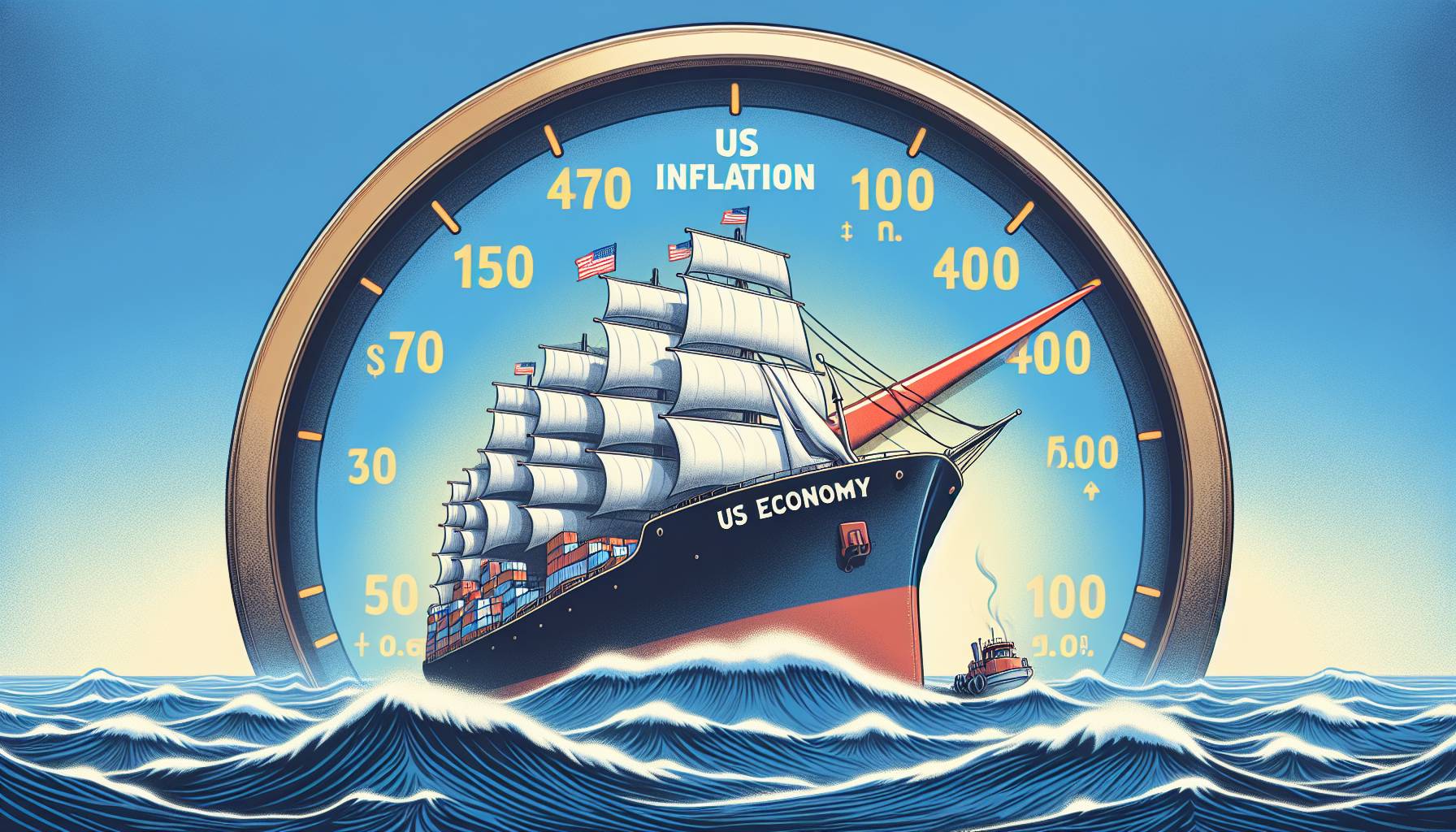Impact of inflation data on market sentiment
The release of the latest consumer price data has significantly influenced market sentiment, as investors and traders closely scrutinize inflation metrics to gauge future economic trajectories. Inflation figures provide crucial insights into the health of the economy, impacting decisions across various financial sectors. In recent months, the persistent rise in consumer prices has sparked concerns among market participants, prompting a heightened sense of caution.
For Forex traders in Australia, shifts in consumer prices can have direct consequences on the Australian dollar’s strength. If inflation accelerates, it may prompt the Reserve Bank of Australia to consider adjusting monetary policies, potentially raising interest rates to curb spending and borrowing. Such moves can attract foreign investment, leading to currency appreciation, but they can also dampen domestic economic activity if borrowing costs rise too quickly.
Market participants are now factoring in the possibility that the Fed may maintain or even increase interest rates to combat persistent inflation. This adjustment in outlook is reflected in futures markets, where traders are placing fewer bets on rate cuts in the near term. The recalibration is also evident in bond markets, where yields have adjusted to reflect the anticipated trajectory of monetary policy.
Traders adjust expectations for Fed policy
The Australian financial markets have mirrored global trends, with the ASX showing sensitivity to the inflation data. Traders and analysts are keenly observing the Reserve Bank of Australia’s response, as their monetary policy decisions will be crucial in shaping investor confidence. As inflation continues to be a dominant theme, market sentiment remains on edge, underscoring the importance of these economic indicators in guiding investment decisions and strategies.
Projections suggest that the Fed may opt for a more cautious approach, possibly implementing a series of gradual rate adjustments rather than abrupt changes. This strategy could serve to temper inflationary pressures while providing enough leeway for economic activities to continue unhindered. The timing and magnitude of any rate changes will be crucial, as they must align with ongoing economic developments both domestically and globally.
In response to the new data, there has been a noticeable shift in market behavior, with investors reassessing their portfolios and strategies to mitigate potential risks. The inflation update has led to increased volatility, with equities experiencing fluctuations as traders react to the implications of sustained price increases. This environment of uncertainty often results in a more defensive market stance, as investors seek to safeguard their assets against potential downturns.
Analyzing future interest rate projections
Traders are acutely aware that any Fed policy decisions will have significant ripple effects across global markets, including Australia. As such, they are closely monitoring statements and signals from Fed officials to gauge the central bank’s next moves. The evolving expectations underscore the delicate balance the Fed must maintain between supporting economic growth and ensuring price stability, a challenge that continues to influence trader sentiment and market dynamics.
The recent consumer price data has led traders to recalibrate their expectations for future Federal Reserve actions. As inflation figures came in higher than anticipated, the likelihood of imminent interest rate cuts by the Fed has diminished. This shift in expectations is primarily driven by the need to curb inflationary pressures, prompting traders to reconsider their strategies in light of a potentially prolonged period of higher rates.
For Australian Forex traders, understanding these dynamics is essential. The interplay between US monetary policy and global currency markets requires vigilance and strategic foresight. Traders must stay attuned to the Fed’s communications and economic indicators that might influence its decisions, such as employment data and GDP growth rates.
In the Australian context, the Reserve Bank of Australia (RBA) is also navigating a challenging environment. While the RBA’s policies are primarily driven by domestic economic conditions, international factors, especially those emanating from the US, play a significant role in shaping expectations. Analysts predict that any moves by the Fed could have a cascading effect on the RBA’s policy decisions, potentially influencing the Australian dollar and local bond markets.
Economic impacts of consumer price changes
The landscape of future interest rate projections remains dynamic, with analysts continuously updating their models to incorporate the latest economic data and policy announcements. The emphasis is on maintaining stability in the financial markets while addressing the dual challenges of inflation and economic sustainability. As such, investors and policymakers alike are poised for a period of close observation and strategic maneuvering, as they navigate the complexities of the current economic climate.
Ultimately, staying informed about Fed policy expectations and market reactions is crucial for traders seeking to navigate the Forex landscape effectively. By aligning their strategies with macroeconomic trends and central bank decisions, traders can enhance their potential for success in this dynamic market.
In the Forex arena, any shift in Fed expectations can cause ripple effects. Currency pairs involving the US dollar, such as AUD/USD, often react sharply to changes in interest rate forecasts. If the Fed signals a pause or a slower pace in rate cuts, the US dollar might strengthen, applying downward pressure on the Australian dollar. Conversely, anticipation of rate cuts could lead to USD weakness, offering potential gains for the Aussie dollar.
Understanding these economic impacts is crucial for traders aiming to capitalize on currency movements. By monitoring consumer price trends, Forex traders can anticipate potential policy shifts and market reactions, positioning themselves strategically to maximize returns.
Market reactions to Fed policy expectations
Consumer price changes have significant implications for the broader economy, influencing everything from currency valuation to interest rate decisions. When inflation data is released, it serves as a barometer for economic health, offering insights into purchasing power and cost of living adjustments. A higher inflation rate often signals increased prices for goods and services, impacting consumer spending and savings.
As traders and investors digest the latest consumer price data, their attention quickly shifts to the Federal Reserve’s next steps. Expectations regarding the Fed’s policy decisions can create waves in the financial markets, influencing everything from stock indices to currency pairs. Recent trends suggest traders are recalibrating their outlook, with a growing consensus that the Fed might delay interest rate cuts.
Moreover, market sentiment can exacerbate these movements. If traders collectively adjust their positions based on perceived Fed actions, it can lead to increased volatility in currency markets. This environment presents both risks and opportunities, urging traders to carefully manage their portfolios and employ risk mitigation strategies.
Furthermore, changes in consumer prices can affect Australia’s trade balances. As an exporter of commodities, increased inflation can drive up the costs of Australian goods abroad, possibly reducing demand. Conversely, if Australia’s trading partners experience higher inflation, Australian exports might become more attractive, bolstering the trade surplus.
The current landscape of interest rate projections is marked by a complex interplay of economic indicators and monetary policy signals. Analysts are meticulously examining a range of data points to forecast the trajectory of interest rates, particularly in light of the recent consumer price data. The consensus among economists is that the path forward will be heavily influenced by the Fed’s commitment to managing inflation without stifling economic growth.

